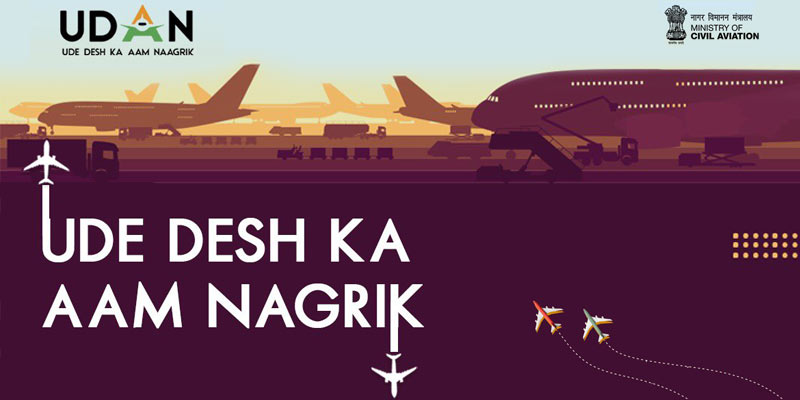- India
- Apr 22
Govt launches UDAN 5.0
The government launched UDAN 5.0 to further enhance the connectivity to remote and regional areas.
What is UDAN scheme?
• UDAN (Ude Desh Ka Aam Naagrik) is a key component of the National Civil Aviation Policy (NCAP), 2016 which was released by the ministry of civil aviation (MoCA) on June 15, 2016.
• The ministry of civil aviation launched RCS-UDAN scheme on October 21, 2016. The first RCS-UDAN flight was inaugurated by Prime Minister Narendra Modi on April 27, 2017 from Shimla to Delhi.
• The primary objective of the regional connectivity scheme (RCS) is to facilitate and stimulate regional air connectivity by making it affordable.
• The regional connectivity scheme will be applicable on route length between 200 to 800 km with no lower limit set for hilly, remote, island and security sensitive regions.
• The scheme is for a period of 10 years.
• The government aims to achieve the target of operationalising as many as 100 unserved and underserved airports and starting at least 1,000 RCS routes by 2024.
• As on February 5, 2023, as many as 459 UDAN routes involving 72 airports including nine heliports and two water aerodromes have been operationalised.
Promoting affordability of Regional air connectivity is envisioned under RCS by supporting airline operators through:
i) Concessions by central government, state governments and airport operators to reduce the cost of airline operations on regional routes.
ii) Financial support (viability gap funding or VGF) to meet the gap, if any, between the cost of airline operations and expected revenues on such routes.
• RCS-UDAN is a demand-driven scheme, where airline operators undertake assessment of demand on particular routes.
Key Features of UDAN 5.0:
• Under the fifth round of the regional connectivity scheme, viability gap funding (VGF) will be capped at 600 kilometres stage length for both priority and non-priority areas, which was earlier capped at 500 km.
• Besides, no pre-determined routes would be offered. Only network and individual route proposals by airlines will be considered.
• The focus will be on Category-2 (20-80 seats) and Category-3 (more than 80 seats).
• The earlier stage length cap of 600 kilometres is waived and there is no restriction on the distance between the origin and destination of the flight.
• The airlines would be required to submit an action/business plan after two months from the issuance of LoA (Letter of Acceptance), wherein they submit details about their aircraft acquisition plan/availability of aircraft, crew and slots at the time of the technical proposal.
• The same route will not be awarded to a single airline more than once, whether in different networks or in the same network.
• Exclusivity will be withdrawn if the average quarterly PLF (Passenger Load Factor) is higher than 75 per cent for four continuous quarters to prevent exploitation of the monopoly on a route.
• Airlines would be required to commence operations within four months of the award of the route. Earlier, this deadline was six months.
• About 25 per cent of the performance guarantee amount will be encashed for each month of delay up to four months to further incentivise quick operationalisation of routes.
• Novation process for routes from one operator to another will be simplified and incentivised.
Manorama Yearbook app is now available on Google Play Store and iOS App Store


